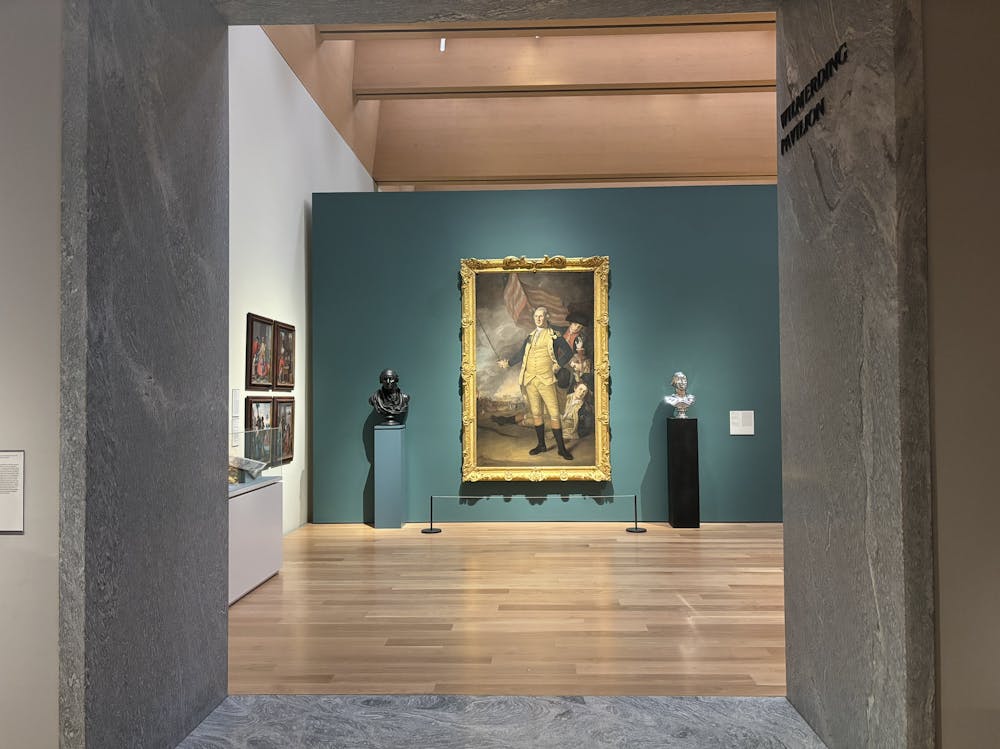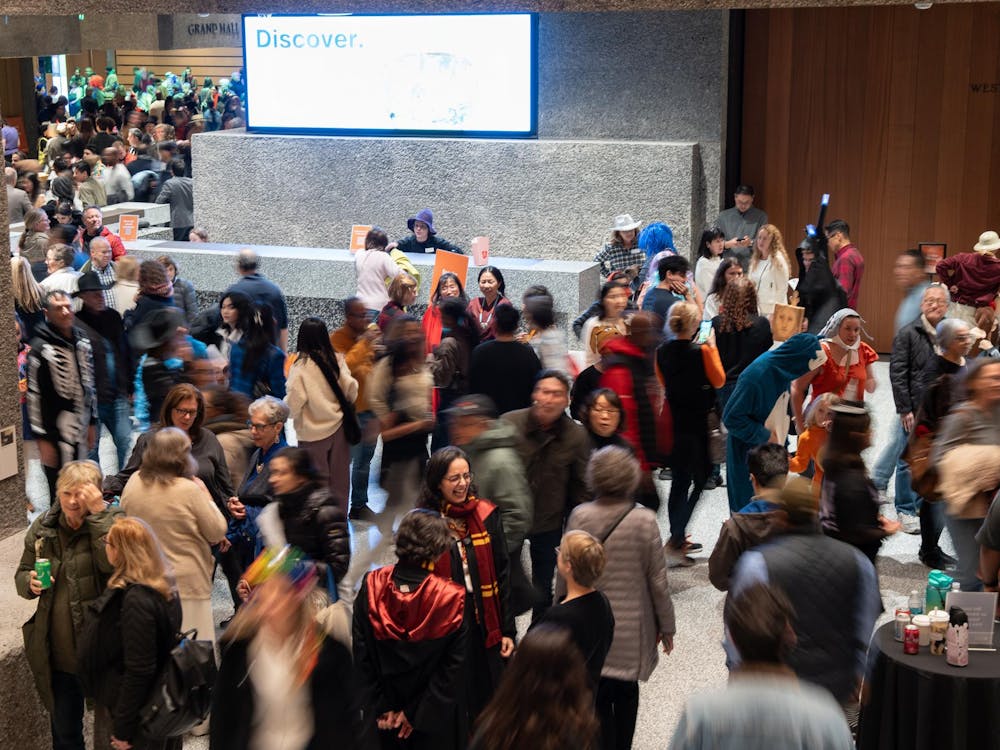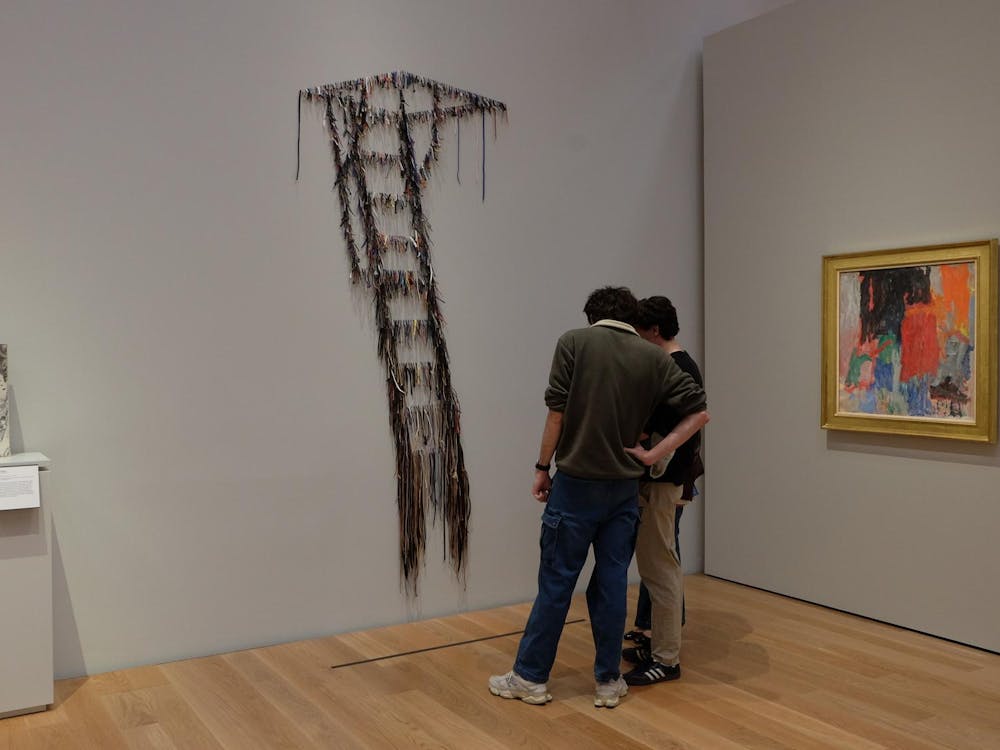Standing valiantly in front of an active battleground and Nassau Hall in the distance, “George Washington at the Battle of Princeton” by Charles Willson Peale was the first painting acquired by Princeton and, fittingly, the first one to be hung in the new art museum itself. The painting is a reminder of the longstanding history of Princeton and acts as a beacon for visitors of the Wilmerding Pavilion of American Art, asking them to explore and confront both the curated space and their ideas of America itself.
While the organization of the gallery can be disorienting at times, the pavilion is an intriguing take on the difficult task of representing the complexities of American history and identity.
While I had briefly spent some time in the pavilion during the museum’s student preview on Oct. 24, it wasn’t until my personal tour with Karl Kusserow, senior curator of the American Art Pavilion, that I truly digested it in full.
“A hallmark of this institution,” Kusserow said, “is the kind of mixing up of works of art from different places and different periods of time to suggest different ways of understanding. This whole installation is organized around that kind of juxtaposition.”
To this point, the pavilion attempts to prompt viewers to piece together the nuances of American history themselves, inviting discussions on protest movements, gender, and environmental justice.

An angle of “George Washington at the Battle of Princeton” by Charles Willson Peale, framed by two busts.
Caroline Naughton / The Daily Princetonian
The first example of this juxtaposition is in the arrangement of the George Washington display. The famous painting that greets all visitors of the pavilion is flanked by two busts of the first president. One, is cast in bronze and was previously owned by Thomas Jefferson, while the other, made of a metallic mirror-like material, was created by Hugh Hayden, a Native American artist. The piece, titled “Hanodaya:yas (Town Destroyer): Reflect,” was specially commissioned for this exhibit. Made from a highly reflective material, the bust forces viewers to confront their own image and, in turn, Washington’s imprint on America. The bust’s base is made from a salvaged piece of ash to represent the burning of Native American villages.
When discussing the mistreatment of Native Americans and African Americans throughout American history, Kusserow said, “We try, in this pavilion, to engage the idea that it’s not just a matter of victimhood.
“They expressed their own agency in sort of combating a lot of the injustices that were inflicted on them,” he added.
Indeed, interconnectedness is the pavilion’s guiding principle. Pieces that seem unrelated at first glance enter into conversation when placed together. For example, “The Culprit Fay” by John Adams Jackson is a sculpture carved from marble from Carrara, a region in Italy scarred by centuries of mining exploitation. This sculpture sits opposite a clay jar by Pueblo artist Maria Martinez, who gathered her materials from the earth after seeking spiritual permission. Together, these pieces illustrate the contrast between Western exploitation of nature and Indigenous stewardship of it.
Opposite this arrangement is a display with similar messaging, an arrangement of various still lifes from the 19th century. Hung in chronological order, the earliest painting depicts natural produce with an arrangement of peaches. However, as the chronology advances, nature soon gives way to the man-made, transitioning to natural products like cheese and champagne, and eventually to solely manufactured goods. This progression reflects a shift from harmony with nature to domination over it, mirroring America’s industrial and environmental trajectory.
In the very back of the pavilion lies the Arts and Crafts section, by far my favorite as someone interested in both textiles and ceramics. In a glass box display, there were several Tiffany glass designs and ceramic items, all in organic shapes that contrasted the manufactured approach of the time period. The display’s ceramic items are classified as Newcomb Pottery, a form that evolved from Tulane’s Newcomb College for women.

During a lull in our conversation, Kusserow pointed me toward his favorite wall in the pavilion, showcasing two quaint landscapes: one of ships in a harbor, and the other a nameless marsh. While unassuming beside the Bierstadt landscape, these pieces emphasize the interconnected thinking behind the curation of this gallery.

“The Signing” by Renee Cox at the Princeton University Art Museum.
Caroline Naughton / The Daily Princetonian
Another notable moment of contrast lies around the corner from the Washington portrait in the Libby Anschutz Gallery. Here, Renee Cox’s revisionist photograph, “The Signing,” emulates the famous “The Signing of the Constitution” painting, replacing the founding fathers with people of color. Just beside this powerful photograph sits the massive painting by Thomas Sully of Mrs. Reverdy Johnson, the wife of Reverdy Johnson, the lawyer of the slaveowner in the Dred Scott decision. The connection between the two pieces took me aback; it felt as though history was confronting itself in this little corner of the museum.
While thought-provoking, the displays can also read as busy and disjointed. I felt the logic behind the pavilion’s curation best revealed itself after taking extended time to linger on each work. While it is likely not possible for a casual museum guest to reflect on each arrangement in the American pavilion, it is a meaningful endeavor for those who take the time.
In the end, the pavilion’s strength lies not in seamless order, but in its deliberate tension. Those who take the time to read, to look, and to think will find that the pavilion offers not just a gallery of art, but a space for a dialogue that challenges, questions, and, ultimately reimagines the story of a nation.
Caroline Naughton is a contributing writer for The Prospect and a member of the Class of 2029. She can be reached at cn8578[at]princeton.edu.
Please send any corrections to corrections[at]dailyprincetonian.com.








